A Peterhead fishing boat has rescued an owl after it was attacked by gulls while out in the north sea.
The lost long-eared owl was nursed back to health by the crew of the Benarkle II after it landed on its deck.
Although traditionally preferring woodland, it came onboard the ship while it was far out at sea – 110 miles north-east of Peterhead.
It was spotted struggling by the ship’s “onboard animal guru” Michael Clarke who caught the owl and took him inside the cabin.
It stayed onboard with the crew for the remaining four days of the voyage.
While onboard the crew made a box for the owl to recover inside.
Mark Addison, the skipper of Benarkle II, said that initially the bird was in a “poor state”.
“It didn’t really take much meat to begin with because we think he was in a little bit of shock” he said.
“He was dehydrated too, but we fed him plenty of chopped-up steak.
“We had to get a smoked sausage in batter for our meal that night instead of steak.”
‘Ears perked up after a day or two’
Mr Addison, 53, is from the village of Saint Fergus near Peterhead.
He is married with six sons. Three of them are also fishermen on the boat.
He said: “His ears perked up after a day or two. He wasn’t too keen when you went close to him initially, but he was sitting on my arm after a few days.”
In spite of being called the long-eared owl, the long tufts above its head are actually feathers, not ears.
The bird was eventually taken to Huntly Falconry Centre for further treatment.
Seagulls ganged up to attack threat
An expert at the centre told the crew it would have likely drowned from being pushed under the water by the gulls.
He believes it is because gulls view the owl as a threat causing them to gang up and attack.
Although he noted it was a young owl having only been born this year.
According to the Woodland Trust, the long-eared owls usually had a wingspan of 37 inches, around the same size as a woodpigeon.
Although they have no natural predators, most gulls are far larger, with some having wingspans of around 62 inches.
Mr Addison added: “Eventually you get a wee bit attached to him.
“We kept him in the box during the day because he would try to fly out the windows, but at night time we would let him fly around the wheelhouse.
“But getting him back in the box was not the easiest of operations.”
In a post on social media, the crew says by the end of the trip he had gotten used to the comings and goings in the wheelhouse.
How common is it for birds to land on boats?
Mr Addison said: “It is quite common for boats and oil rigs to get birds landing on them.
“They get disorientated in the fog and bad weather and just decide to land on the first thing they see.”
“But I’ve been a fisherman for 35 years and I’ve never heard of an owl before.”
After returning to Peterhead, the crew realised the owl needed longer to recuperate.
Mr Addison added: “I think Michael would have liked to keep it in the shed as a wee pet but I am not sure his wife would have liked that.”
Resting at Huntly Falconry Centre
The crew took the owl to Huntly Falconry Centre to continue its rehabilitation.
Around 200 various kinds of birds of prey are kept at the centre, including falcons, eagles, owls, hawks and buzzards.
John Barrie, who owns the centre said it was unusual for an owl to be so far offshore.
He is planning on releasing it back into its native habitat when it’s ready.
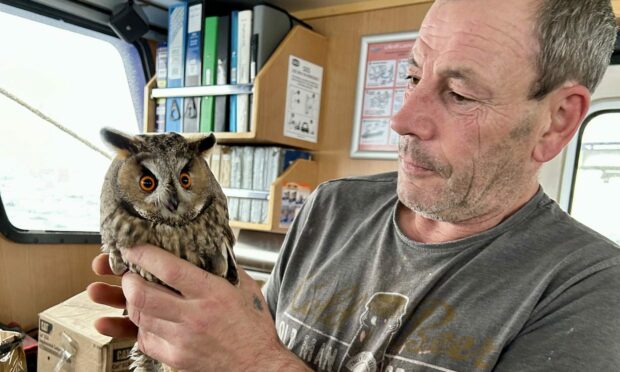
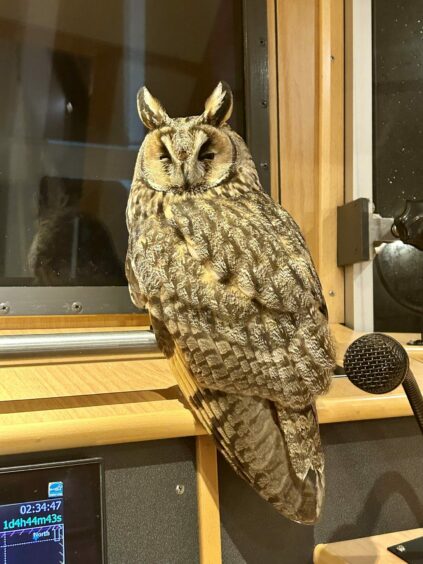

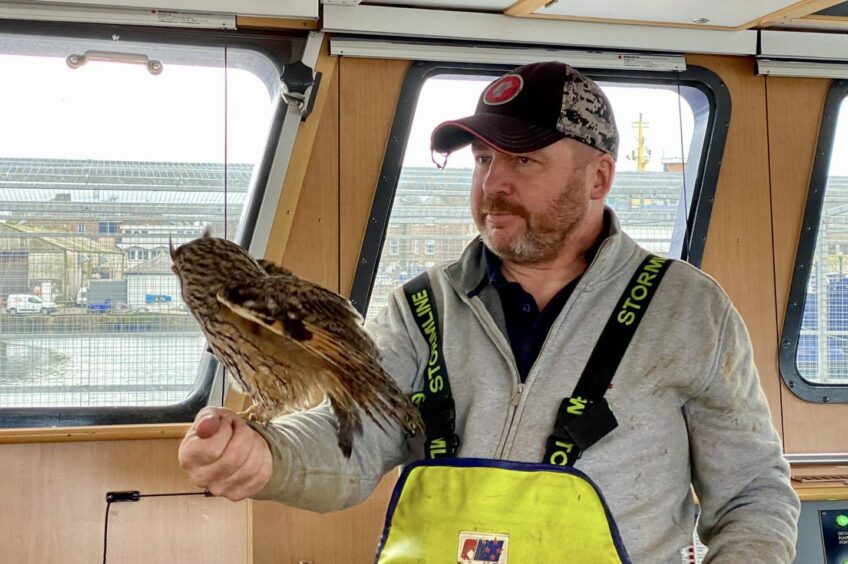
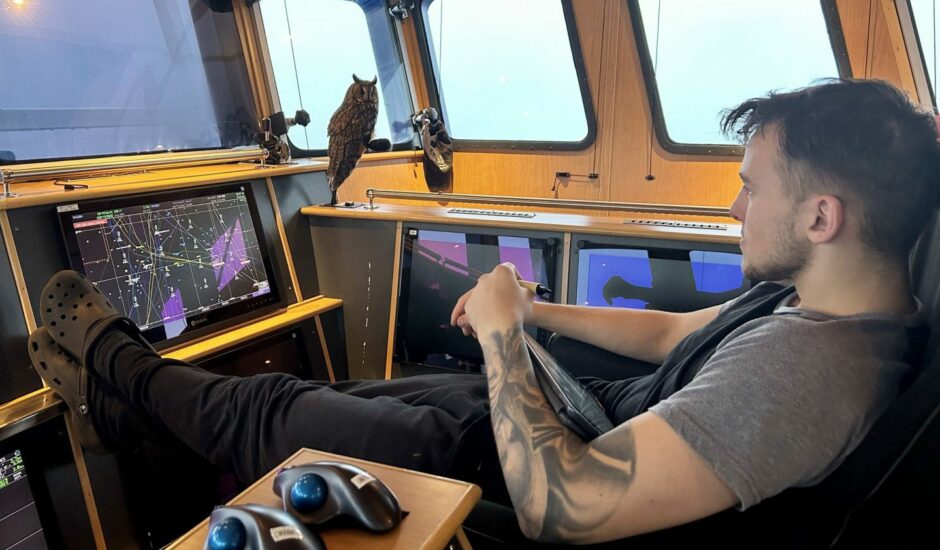
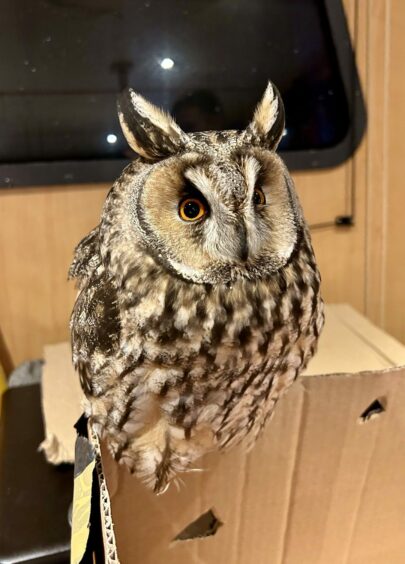
Conversation